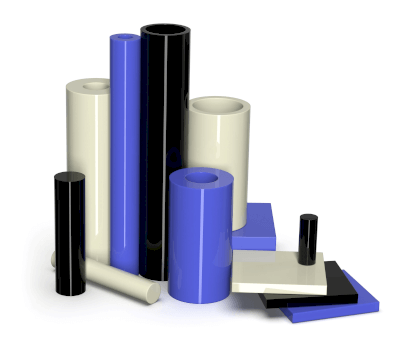What Is Nylon Casting?

Nylon casting refers to the production of nylon through a casting method.
The casting method involves the reaction of monomers, the raw materials, within a mold to create the material. As the resin cools, internal strain can develop within the material, potentially leading to deformation and, in some cases, breakage.
Compared to other molding methods, less strain is generated during the casting process, resulting in superior dimensional stability. Additionally, reduced deformation due to strain results in a material that is stronger than standard nylon.
Uses of Nylon Casting
Nylon casting finds applications in the automotive industry, particularly in the production of bearings. Bearings are components designed to support rotating shafts, reducing friction during rotation and thereby lowering energy consumption and the risk of component failure.
Traditionally, bearings were predominantly made of metal due to their need for durability. However, as automobiles have become lighter to improve fuel efficiency, there is a growing consideration for plastic bearings. Nylon casting, known for its lightweight and strength, is utilized as a material in this context.
Principle of Nylon Casting
Various types of nylon resins exist, with Nylon 6 being the most commonly used type in nylon casting. Nylon 6 is produced through the ring-opening polymerization of a substance known as ε-caprolactam.
Nylon 6 is the most prevalent form of nylon. While Nylon 6,6 is another common variant, it exhibits slightly different physical properties. While Nylon 6,6 has a higher melting point, Nylon 6 offers superior processability.
Nylon 6 has several advantages:
- Oil resistance, suitable for use around engines.
- Higher melting point than other resins, enabling use at elevated temperatures.
- Lightweight and durable.
Despite its numerous advantages, Nylon 6 also has disadvantages. Its significant drawback is its high water absorbency. Nylon molecules contain amide groups, which are hydrophilic and prone to reacting with water, leading to hydrolysis. Hydrolysis can result in dimensional deformation and loss of strength.
Types of Nylon Casting
1. Cast Nylon Casting 6 (Polyamide 6)
Cast nylon casting 6 is a linear polymer produced from ε-caprolactam, known for its excellent abrasion and impact resistance. It also exhibits chemical resistance and weather resistance, making it suitable for outdoor and harsh environment applications.
However, due to its moisture-absorbing tendencies, dimensional changes may occur in humid environments. Major applications include gears, bearings, gears, packing, and textiles.
2. Cast Nylon Casting 66 (Polyamide 66)
Cast nylon casting 66 is a high-strength linear polymer produced from adipic acid and hexamethylenediamine. Consequently, it offers better heat resistance and abrasion resistance compared to cast nylon casting 6.
It is suitable for use in high-temperature environments, such as insulation in automotive parts, electrical equipment, mechanical parts, and industrial components. It also exhibits favorable friction properties, making it widely employed in sleeves, bearings, gears, and other components.
3. Cast Nylon Casting 12 (Polyamide 12)
Cast nylon casting 12 is a linear polymer produced from amine lauroyl chloride, known for its excellent flexibility and low-temperature resistance. Its softness allows for easy bending and twisting, and it also exhibits chemical resistance.
Common applications include automotive and aerospace components like fuel tanks, brake tubes, and cable sheaths. Additionally, it finds extensive use in medical equipment and sports gear.
4. Cast Nylon Castings (Oil-Resistant)
Some variants of cast nylons offer enhanced oil resistance, making them highly suitable for applications involving oil, gasoline, and other fuels.
They are employed in engine components, fuel system parts, and various machinery and vehicle parts exposed to oil and grease.